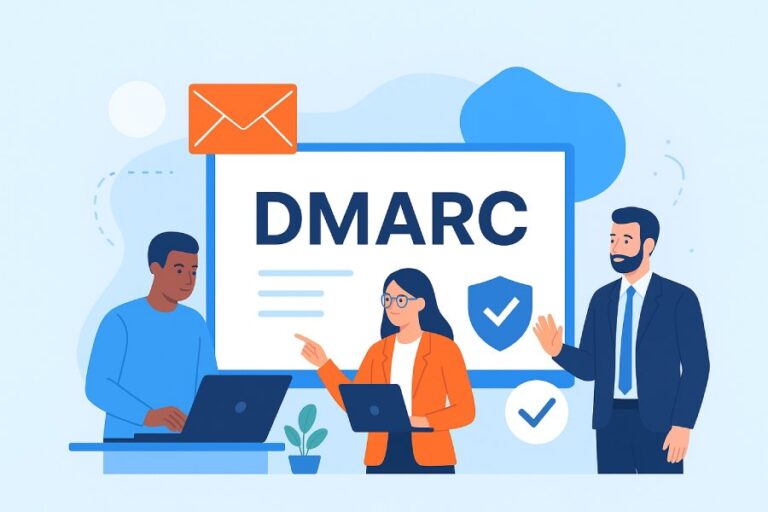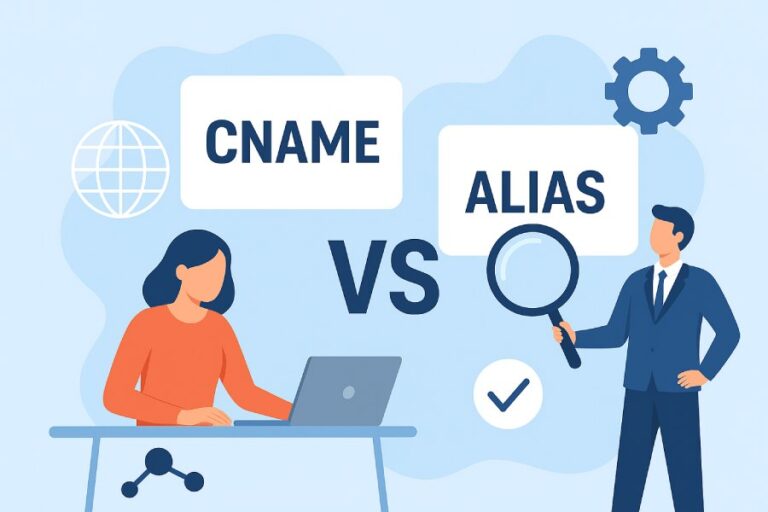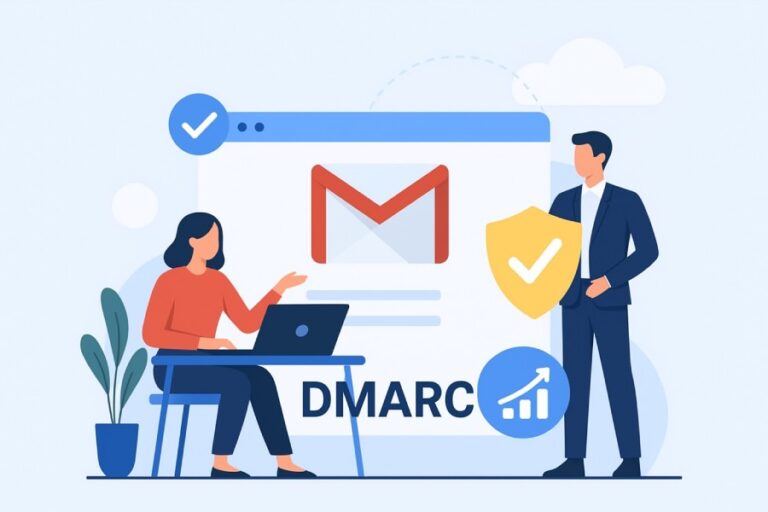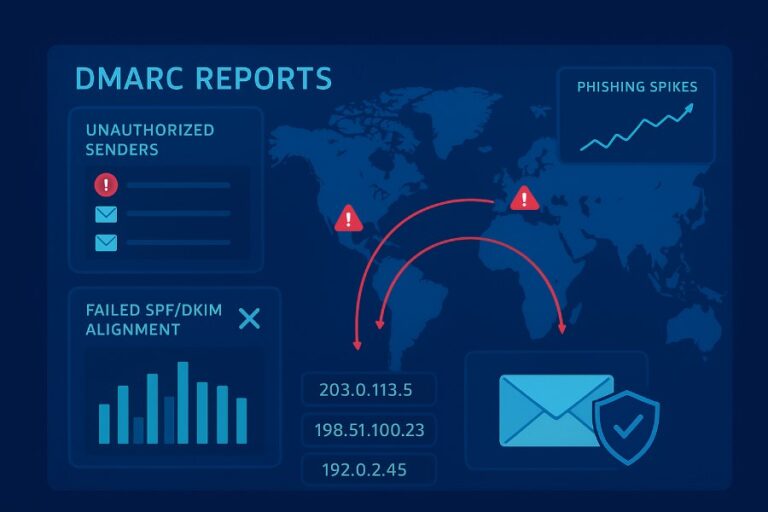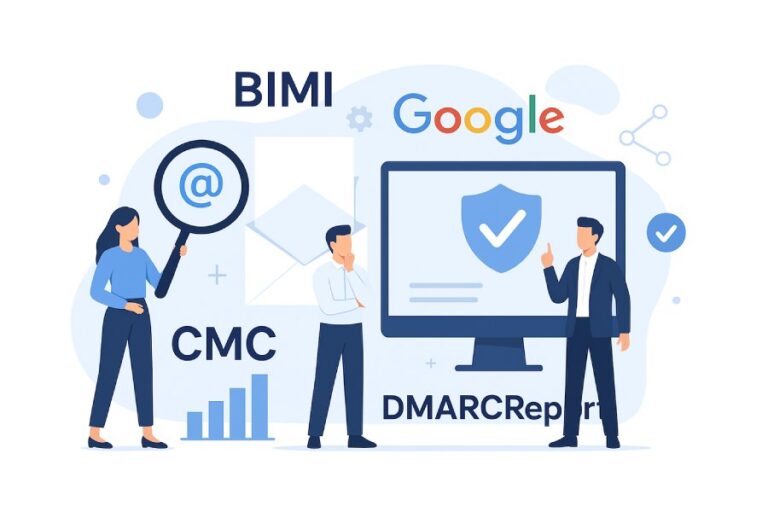How can I create a DMARC record for my domain to stop email spoofing?
To stop email spoofing, create and publish a TXT record at _dmarc.yourdomain.com with a value like v=DMARC1; p=reject; rua=mailto:dmarc-reports@yourdomain.com; ruf=mailto:dmarc-forensics@yourdomain.com; adkim=s; aspf=s; pct=100; fo=1; ri=86400 only after verifying that all your senders pass SPF and/or DKIM in alignment with your From domain. DMARC (Domain-based Message Authentication, Reporting, and Conformance) lets domain owners tell receivers how…

